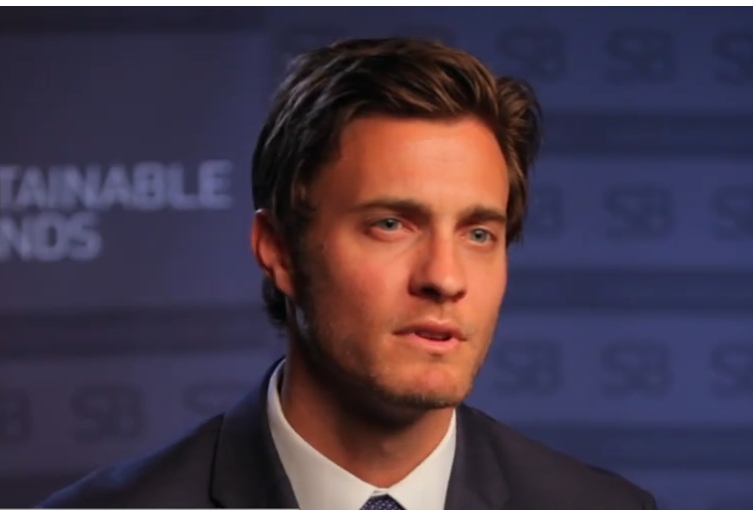By converting greenhouse gases into biodegradable products, Mark Herrema has achieved financial success without resorting to traditional production methods or funding avenues. He has quietly established himself as a leader in the nascent climate technology industry as co-founder and CEO of Newlight Technologies. He has shown over the last 20 years that innovation motivated by environmental urgency may result in both long-term commercial value and scientific discoveries.

Herrema dedicated himself to a concept that many viewed as ambitious after creating Newlight in 2003: absorbing greenhouse gasses and converting them into a high-performance substance. After years of rigorous testing, AirCarbon—a very novel thermoplastic that replicates biological processes—was the result. It is made from ocean-based microorganisms that break down carbon dioxide and methane to produce a carbon-negative, ocean-degradable polymer that functions remarkably like plastic. Because of its great versatility, the material is already being used in a variety of industries, including food service and fashion.
Mark Herrema – Bio Data and Career Information
| Name | Mark Herrema |
|---|---|
| Nationality | American |
| Education | Princeton University, Magna Cum Laude |
| Current Role | Co-Founder & CEO, Newlight Technologies |
| Industry | Climate Tech, Bioplastics, Sustainable Materials |
| Active Since | 2003 |
| Known For | Inventing AirCarbon, Climate-Tech Innovation |
| Awards & Honors | EPA Green Chemistry Award, WEF Pioneer, Nova Institute Biomaterial of the Year |
| Primary Innovation | AirCarbon – Biodegradable, carbon-negative material made from greenhouse gases |
| Estimated Net Worth | $40–$70 million (private valuation-based estimate) |
The company’s supply contracts and license agreements have greatly increased its market relevance in recent years. Newlight is still privately held, but its alliances with well-known consumer brands have strengthened its reputation and increased its market value. These events add to Herrema’s estimated net worth, which is conservative and depends on the company’s value, equity holdings, and strength of intellectual property. It ranges from $40 to $70 million. His approach to creating value has been quite effective, combining strategic industry alignment with long-term technology investment.
Herrema stands out for presenting Newlight’s objective in a narratively consistent manner. His interviews and public statements frequently center on the real-world connections between business and sustainability. In one particularly lucid comment, he underlined the importance of climate-focused education, contending that knowledge of the observable consequences of environmental harm—such as agricultural losses, drought, or increased insurance premiums—could impact consumer behavior and policy.
His policy recommendations are especially compelling. According to one idea, carbon footprints should be prominently shown on product labels, similar to nutrition labels. This will promote market-driven accountability by empowering consumers to select between high- and low-emission items.
That way of thinking is becoming popular. Businesses are starting to use sustainability indicators that closely align with the principles Herrema has long advocated as environmental disclosures become more standardized. His company has used AirCarbon-based products to help large corporations decarbonize portions of their supply chains through strategic alliances. Materials like this provide significant environmental benefits in addition to branding advantages for companies under pressure to reduce Scope 3 emissions.
The industry’s perception of greenhouse gasses has been significantly altered by AirCarbon’s success. Herrema and his colleagues framed carbon emissions as untapped resources—raw materials for production rather as contaminants to be stored—instead of viewing them as an expensive burden. The ramifications of the philosophical change are noteworthy. It reorients the framing of environmental legislation, creates new investment opportunities, and even introduces new classes of infrastructure focused on the conversion of gas into materials.
This approach has gradually garnered institutional legitimacy during the last ten years. Herrema’s profile has gained weight thanks to awards from the World Economic Forum, the Nova Institute, and the U.S. Environmental Protection Agency. This has attracted the attention of private equity firms and lawmakers who are interested in climate solutions. Newlight’s standing in venture markets has significantly improved as a result of these endorsements, enabling it to increase production and negotiate long-term technological contracts.
From a Princeton graduate to a high-impact climate-tech entrepreneur, Herrema’s professional path reflects the wider development of industry leadership. For many years, extraction and consumption were closely related to the accumulation of wealth in industrial sectors. Herrema’s strategy changes that perception. He has developed a model that is both economically scalable and environmentally rejuvenating by turning waste into value. Early-stage entrepreneurs seeking to strike a balance between profit and purpose can find inspiration in this welcome reversal of expectations.
Herrema and other pioneers in related fields share a lot of similarities. Herrema is part of a larger cultural realignment, much like Andreas Malm, whose work has changed scholarly viewpoints on fossil capitalism, or Boyan Slat, who started The Ocean Cleanup. He belongs to a new generation of CEOs who see planetary health as an integral part of financial performance rather than a secondary consideration. This change is especially advantageous for global sustainability goals since it makes climate action not only ethically right but also financially prudent.
Herrema has created a strong business plan by fusing product development with his personal objective. The goods made from AirCarbon are material narratives rather than merely plastic alternatives. They tell tales of business responsibility, technical innovation, and climate recovery. These symbolic elements gain significant value as customer knowledge rises, impacting brand identification and purchase decisions.
